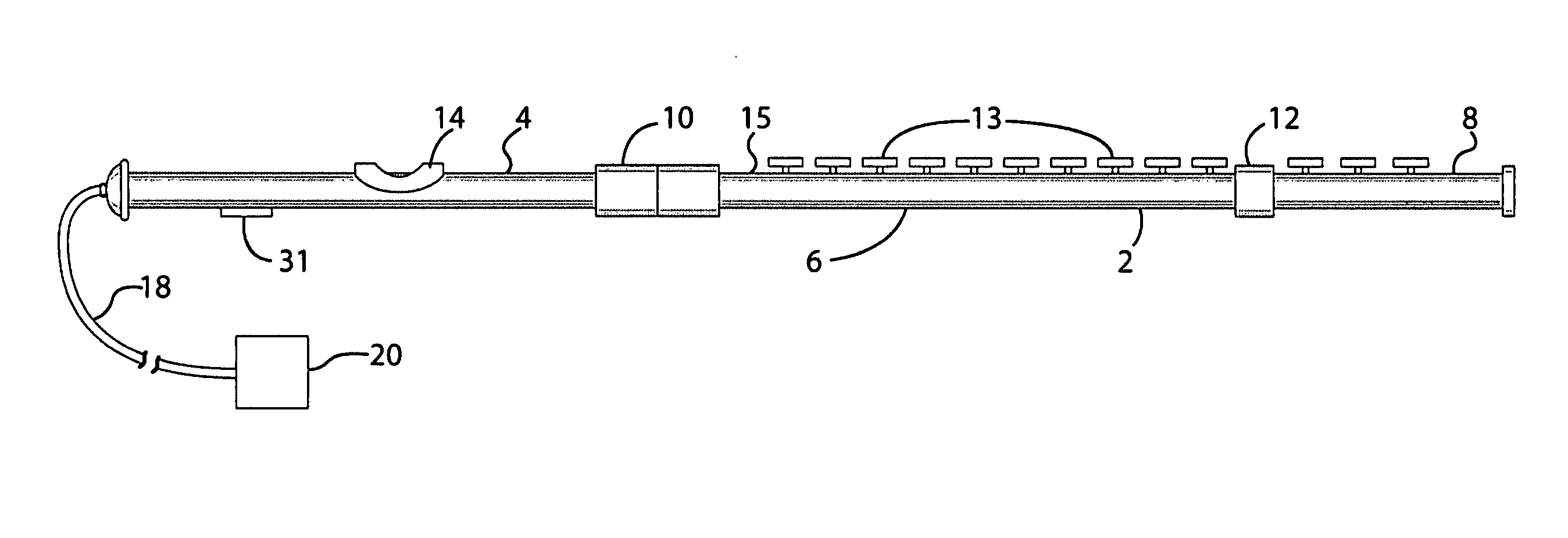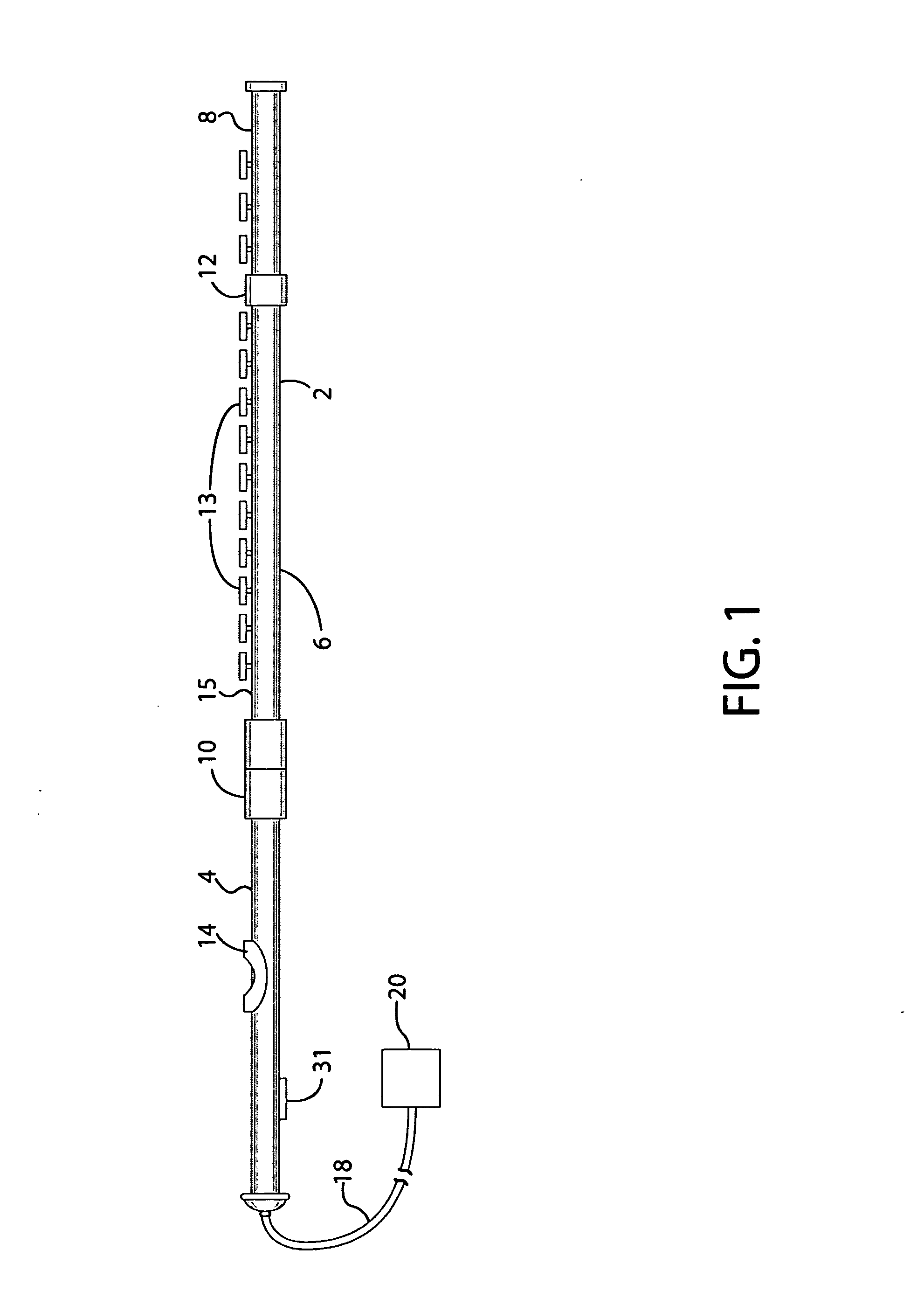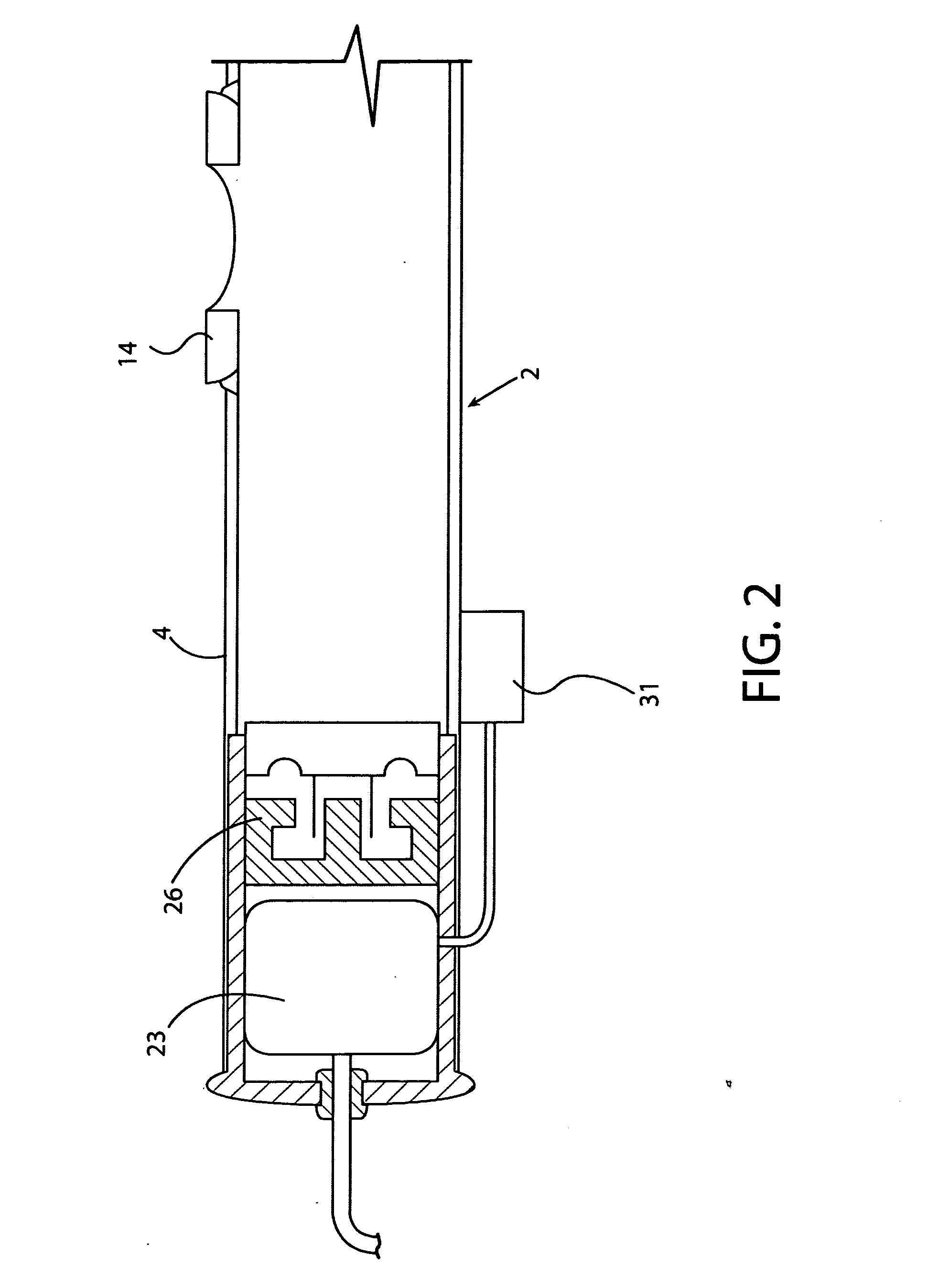Musical instrument with electronic tuning
- Summary
- Abstract
- Description
- Claims
- Application Information
AI Technical Summary
Benefits of technology
Problems solved by technology
Method used
Image
Examples
Embodiment Construction
[0018]Functions
[0019]In a flute embodiment of the present invention the tuning plug is replaced by a tuning actuator that is electronically energized, and whose vibrations change the effective cavity length. The tuning actuator's vibrations are substantially at quadrature (right angle) to the phase of the primary tone. That changes the pitch, not by introducing a second tone, but by changing the length of the cavity to amend the primary tone.
[0020]Using an internal pitch reference and a closed feedback loop, the instrument automatically brings a played note onto correct pitch. The volume and other aspects of the tone are controlled by the player, and the player can also deviate from the pitch for artistic effect with a “bending” lever, as explained later.
[0021]The instrument improves a player's “ear” because the player can always hear the correct pitch. Even expert musicians benefit from the invention because they need not subconsciously compensate for off-pitch intonation caused by...
PUM
 Login to View More
Login to View More Abstract
Description
Claims
Application Information
 Login to View More
Login to View More - R&D
- Intellectual Property
- Life Sciences
- Materials
- Tech Scout
- Unparalleled Data Quality
- Higher Quality Content
- 60% Fewer Hallucinations
Browse by: Latest US Patents, China's latest patents, Technical Efficacy Thesaurus, Application Domain, Technology Topic, Popular Technical Reports.
© 2025 PatSnap. All rights reserved.Legal|Privacy policy|Modern Slavery Act Transparency Statement|Sitemap|About US| Contact US: help@patsnap.com



